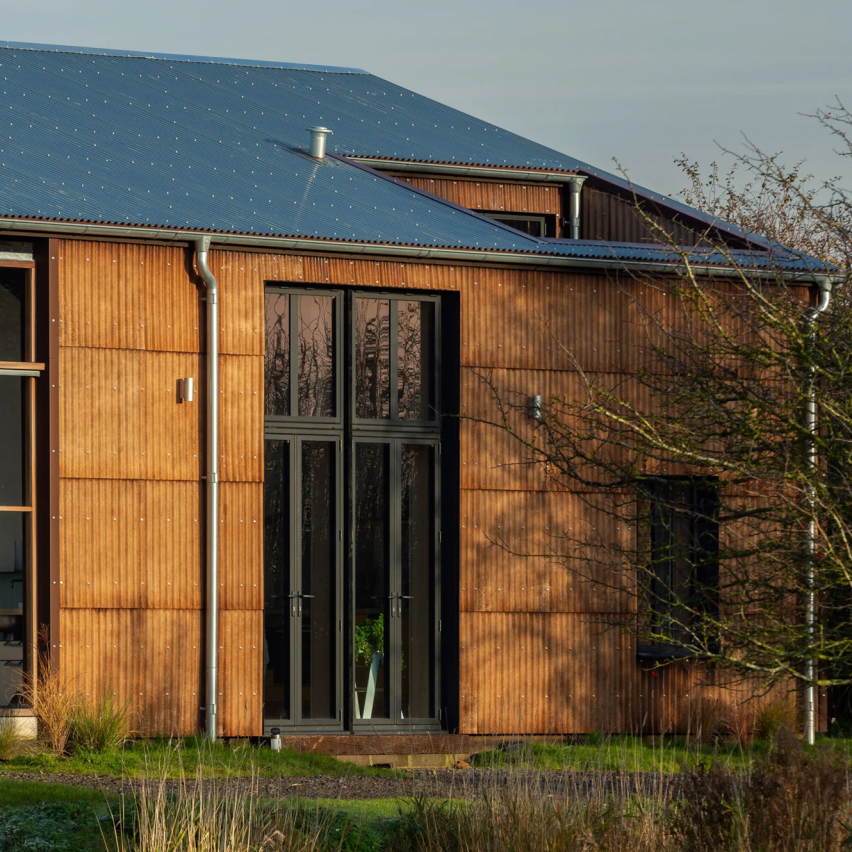See how hemp is cultivated, processed and used to build a house in this movie

This short film shows how hemp was grown on a Cambridgeshire farm and turned into construction materials that sequester carbon.
The movie was made at Margent Farm, which was bought by film producer Steve Barron to grow hemp for his own home on the property.
It shows how fast-growing hemp was planted, harvested and processed into hempcrete and bioplastic cladding on the home, which is called Flat House.
Hemp has been cultivated for centuries in many societies
The woody inner section of the plant's stem, called shives, was processed into hempcrete by chopping it up and mixing it with lime. It was used at Flat House as a non-load-bearing wall infill and insulation material.
Hemp-based bioplastic was used to clad the outside of the home. This is made from the strong outer fibres of the plant's stem mixed with bio-resin and pressed into corrugated sheets. Fast-growing hemp is a highly versatile raw material as well as an effective way of sequestering atmospheric carbon, according to Cambridge university researcher Darhsil Shah, who advised Barron on how to make construction materials from the plant.
"Numerous studies estimate that hemp is one of the best CO2-to-biomass converters," Shah told Dezeen in an interview last month. "It's even more effective than trees."
"Industrial hemp absorbs between 8 to 15 tonnes of CO2 per hectare of cultivation," he explained. "In comparison, forests typically capture 2 to 6 tonnes of CO2 per hectare per year...
| -------------------------------- |
| Future is Rural video presented at London Design Biennale's Japan Pavilion |
|
|
Villa M by Pierattelli Architetture Modernizes 1950s Florence Estate
31-10-2024 07:22 - (
Architecture )
Kent Avenue Penthouse Merges Industrial and Minimalist Styles
31-10-2024 07:22 - (
Architecture )






